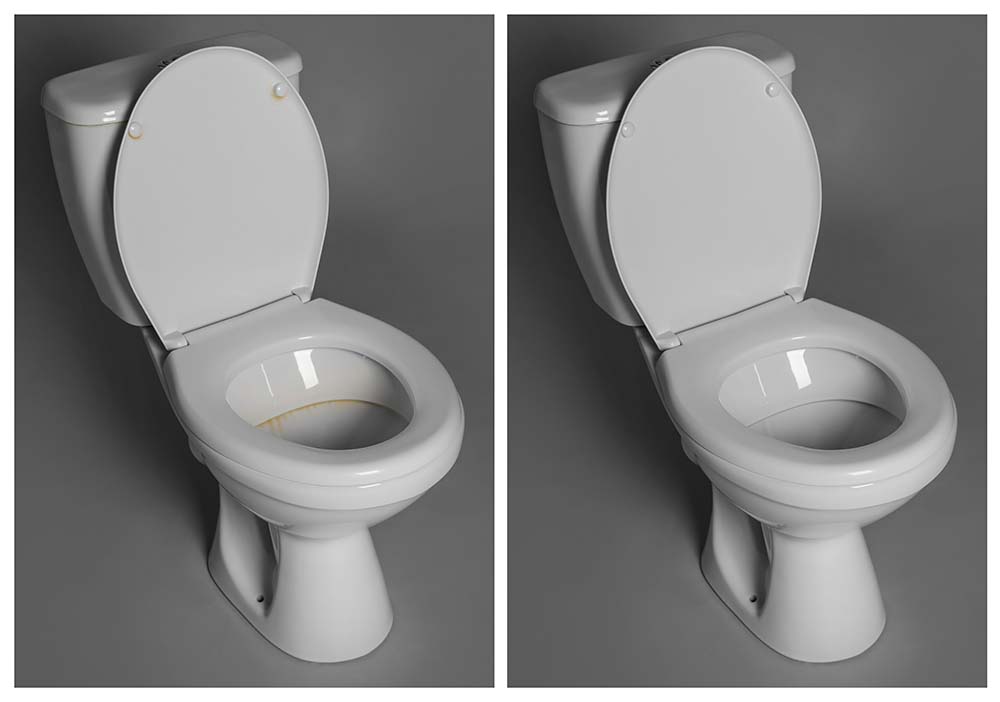Does your toilet have an insightful black waterline? Have you tried everything but it just keeps coming back? Don’t worry, since today we’ll show you the right way in how to clean black ring under toilet rim!
Not only that, but we’ll also show you which are the main causes and how you can prevent this sort of problem from happening to you ever again!
Why Does My Toilet this Black Stuff?
Believe it or not, knowing the cause behind your toilet’s black toilet bowl rings can help you out tackle this problem. It can even help you know which is the right way to prevent them!
These are the main reasons why there might be a black ring around the toilet:
- Mineral deposits on your water supply
- Mildew and mold spores
- Bacteria buildup such as Serratia marcescens
Mineral Deposits on Your Water Supply
Your water supply can be among the top culprits behind a black ring.
When hard water flushes the toilet, mineral deposits start to accumulate over time. This is because hard water brings all sorts of minerals, including iron, magnesium, and calcium. Because of this, not only can hard water make your toilet have that awful black waterline, but it can also clog up your shower head and even rust your faucet!
Moreover, since the water holes that allow your toilet to flush are small, hard water tends to block them over time. This can make the bowl start accumulating all sorts of dirt where water isn’t going through. Hard water can also make dirt stick easier to your toilet’s rim as well.
You can identify if your black ring is due to mineral deposits easily. If you notice that the waterline is at the toilet base and its color tends to appear bronze, grey, or brown, then it’s likely a black stain dye to mineral deposits.
Mildew and Mold Spores
When dealing with a black ring under your toilet rim, it’s only natural that your first thought that might cross your mind is that it’s due to mold or mildew. And, you’re not wrong.
Mold spores are among the top reasons why homeowners might count on a black waterline. In some cases, waterlines caused by mildew can even appear green, grey, pink, and orange as well.
If your toilet already counts on mineral deposits, then it’s very likely that mold will also settle on your toilet as well. In case your toilet already has both mineral deposits and mildew, then the chances of spores releasing onto the air increase. In other words, there’s a higher risk of respiratory problems to rise.
Bacteria Buildup such as Serratia Marcescens
Lastly, accumulated bacteria is among the most common reasons why there might be a ring on your toilet bowl.
The most common bacteria that you’ll find in a toilet is the Serratia Marcescens. This bacteria can first have the appearance of a pink waterline. However, this pink ring tends to turn black after some time.
But why does the Serratia Marcosens prevail in most toilets?
Well, the reason behind this is because this pathogen is nearly everywhere you can imagine! As long as there is enough water and humidity in an area, it will probably make its way to that spot since it’s airborne.
This bacteria can, in worst cases, be deadly. For this reason, homeowners need to know which is the right way to disinfect your toilet effectively.
Having Trouble Getting Rid of a Dark Waterline? 4 Ways in How to Clean Black Ring under Toilet Rim
Now that you know the leading causes of why your toilet might count on a black waterline, you can now get rid of this issue accordingly! That way, you avoid mixing all types of cleaning solutions when trying to remove a black ring.
Follow these techniques in how to clean black ring under toilet rim:
- Use your toilet brush, white vinegar, and baking soda for mineral deposits.
- Pour acids to eliminate bacteria.
- Remove mold by pouring bleach onto the toilet tank.
- Use a pumice stone for extra hard black rings.
Use Your Toilet Brush, White Vinegar, and Baking Soda for Mineral Deposits
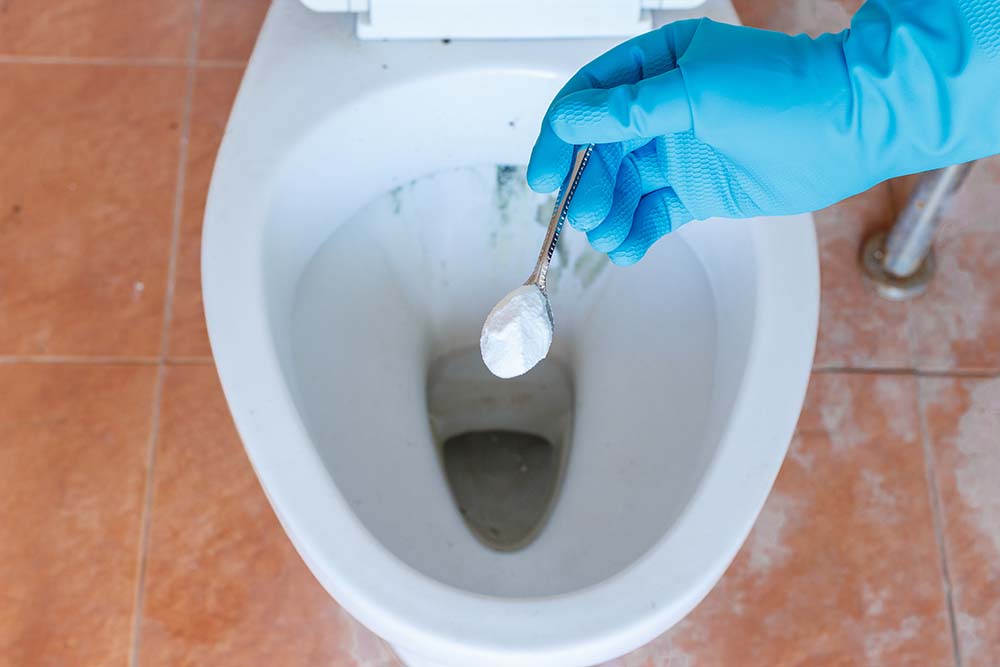
When it comes to removing mineral deposits coming from hard water, you’ll want to use white vinegar and baking soda.
Since vinegar is an acid, it will help eliminate these deposits. Moreover, adding baking soda to the solution will neutralize the vinegar and foam up, thus ensuring that the minerals break away.
Start by pouring a cup of vinegar onto the toilet bowl. Use your toilet brush to spread the vinegar thoroughly through the bowl. Allow the vinegar to sit in for 45 minutes.
Then, sprinkle baking soda on your toilet. Lastly, respray some vinegar for there to be a reaction. Allow the solution to sit in for 15 minutes.
Finally, using your toilet brush, scrub the toilet, and flush it once you’re finished. You can also use borax instead of baking soda if you wish to get rid of tough stains.
Pour Acids to Eliminate Bacteria
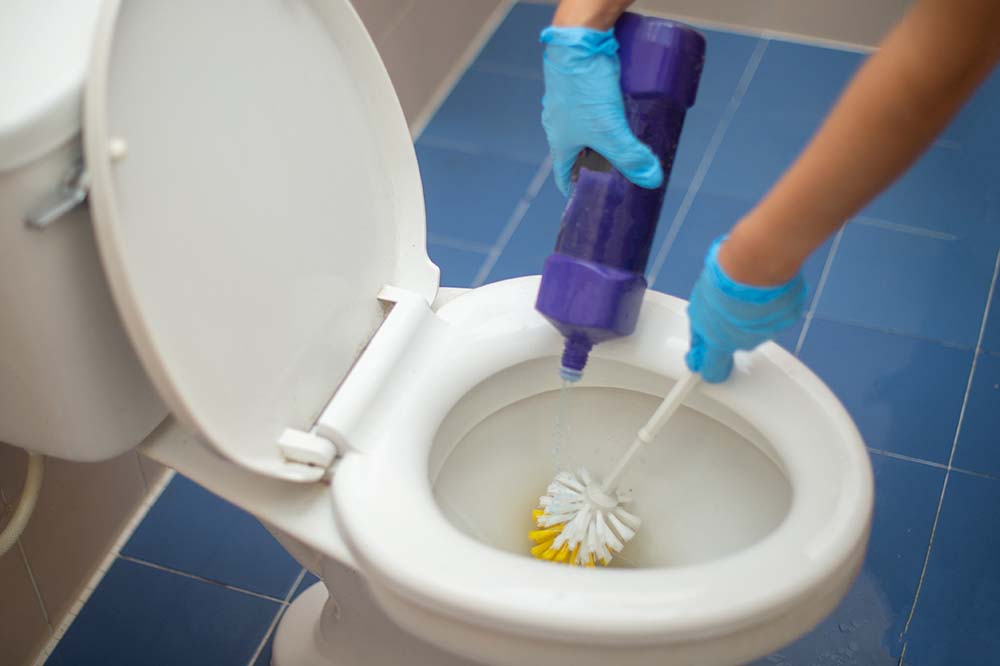
If you noticed a pink ring that’s starting to turn darker, then you should use acids to get rid of it. These acids include hydrogen peroxide, lemons, borax, and vinegar.
Just like when you’re eliminating mineral deposits, removing bacteria consists of pouring the acid on your toilet and allowing it to sit for 45 minutes. After that, proceed by cleaning the toilet thoroughly and flushing it.
If you wish, you can also pour ¼ cups of white vinegar and 1 cup of borax onto your toilet and allow it to sit overnight.
Remove Mold by Pouring Bleach onto the Toilet Tank
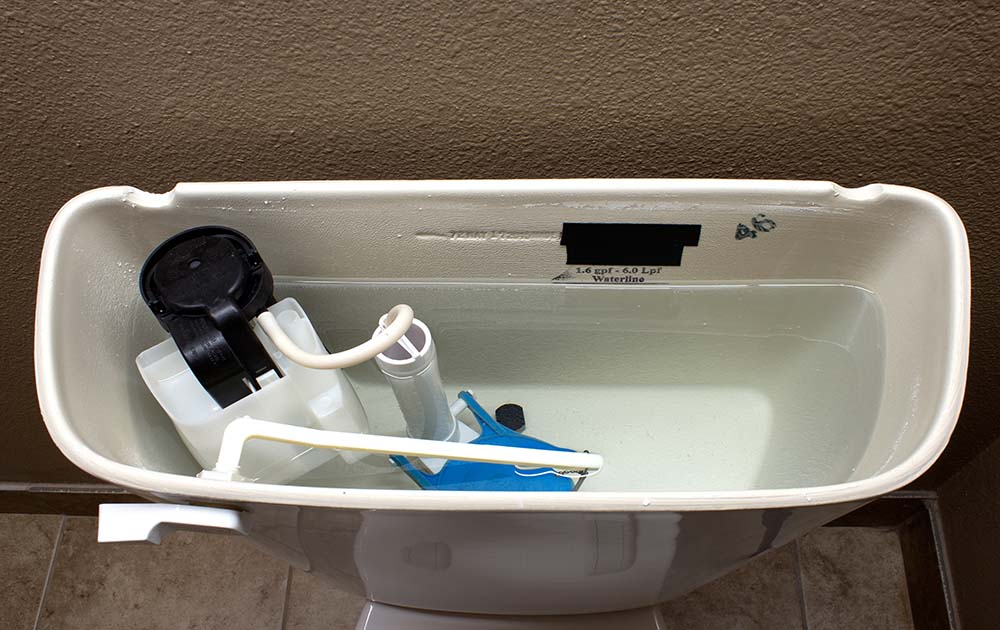
Bleach is a powerful solution known for its effectiveness in disinfecting surfaces.
This cleaning product is excellent at killing all sorts of harmful pathogens, including mold and mildew.
First, start by spraying bleach on your toilet bowl. Then, add bleach onto your toilet’s tank, as well as the overflow tube and other ports. That way, you’ll make sure that all mildew on your toilet is taken care of.
Finish off by scrubbing your toilet.
Use a Pumice Stone for Extra Hard Black Rings
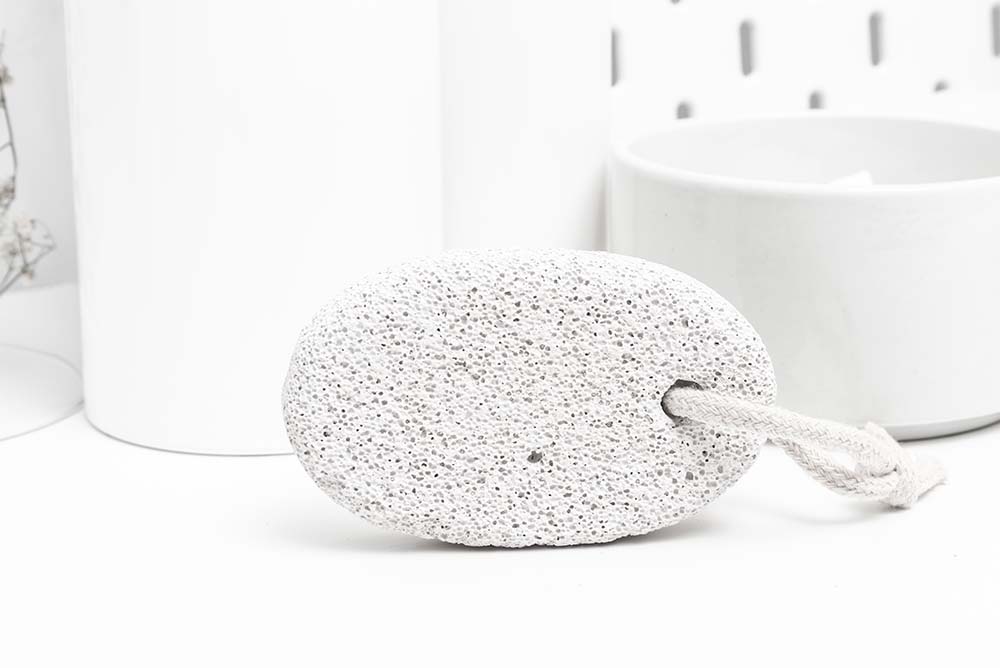
In case you tried all of the methods above and still notice a waterline on your toilet, then you should definitely use a pumice stone.
Pumice stones are light volcanic rocks with porous surfaces. They are softer than porcelain but stronger than mineral deposits, making it the perfect solution to eliminate rings.
Cleaning toilet rings with a pumice stone might require you some hard scrubbing. However, you can be sure that no waterline is strong enough to endure it.
Start by cleaning your toilet as you normally would. Then, wet the pumice stone and start scrubbing the surface where the ring is. Be sure to use firm pressure and a circular motion when cleaning. Finally, use the toilet brush to clean your toilet again and flush the toilet.
When using this method, make sure that both the pumice stone and the surface you’re scrubbing remain wet at all times. Also, be sure only to use this technique when counting on porcelain surfaces.
Keep in mind that using a pumice stone to eliminate stubborn water lines must be your last resort. This is because using them usually leaves small dust on your toilet bowl. That is to say, if you use a pumice stone to clean your toilet regularly, it creates a paste over time.
How Can I Prevent Black Waterlines in the Future?
Worried that these dreadful waterlines might appear in the future?
Here are some essential things you must do to keep away black rings under your toilet rim:
- Use a water softener to treat your water.
- Make sure there’s constant bathroom cleaning.
- Flush the toilet before you start cleaning it.
- Consider replacing your toilet if it’s too old.
Now that you know the causes of black water lines and how to clean black ring under toilet rim, it’s time for you to take action! Remember that you can count on a professional cleaning company if you need extra help.

